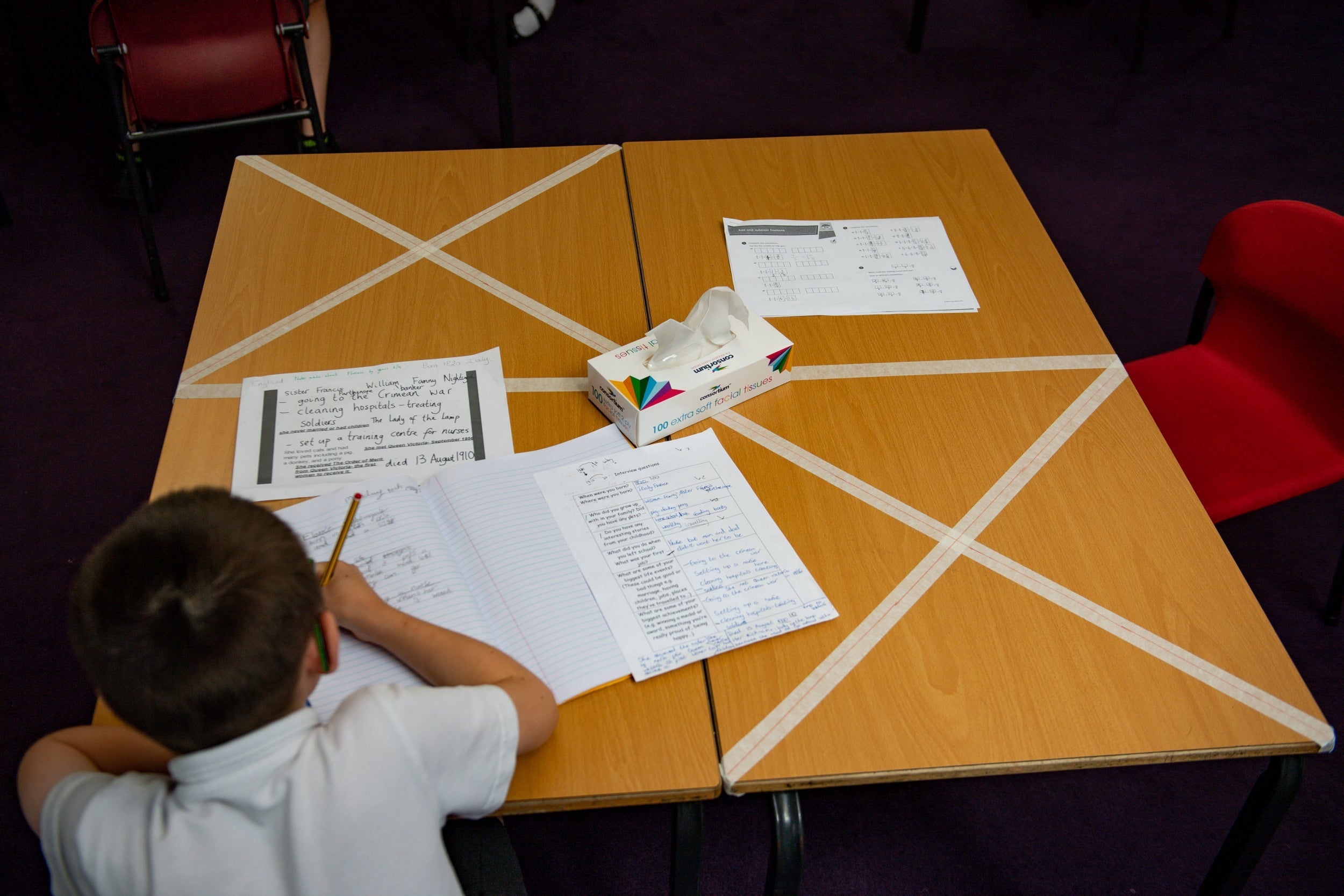Coronavirus: Evidence on how likely children are to transmit Covid-19 remains ‘inconclusive’, scientific advisers say
Independent group of scientists also warns school reopening ‘not safe’ without contact tracing

Your support helps us to tell the story
From reproductive rights to climate change to Big Tech, The Independent is on the ground when the story is developing. Whether it's investigating the financials of Elon Musk's pro-Trump PAC or producing our latest documentary, 'The A Word', which shines a light on the American women fighting for reproductive rights, we know how important it is to parse out the facts from the messaging.
At such a critical moment in US history, we need reporters on the ground. Your donation allows us to keep sending journalists to speak to both sides of the story.
The Independent is trusted by Americans across the entire political spectrum. And unlike many other quality news outlets, we choose not to lock Americans out of our reporting and analysis with paywalls. We believe quality journalism should be available to everyone, paid for by those who can afford it.
Your support makes all the difference.Evidence on coronavirus transmission rates among children remains “inconclusive”, the government’s scientific advisers have said.
Just days before primary schools are set to partly reopen in England, the Scientific Advisory Group for Emergencies (Sage) said it could not confirm if the infection rate among children is lower than among adults.
Ministers have come under increasing pressure from teachers, unions and local authorities to reconsider the proposals to ease the lockdown by reopening schools on June 1.
In an address to the nation on 10 May, Boris Johnson said pupils in reception, year one and year six would be the first to return to school under phase two of the government’s relaxation of restrictions.
Publishing modelling on Friday, Sage said that on the “balance of evidence” the infection rate among children may be lower than in adults, but added that “the evidence remains inconclusive on both the susceptibility and infectivity of children”.
Wider contextual issues – including whether families have black, Asian and minority ethnic (Bame) members – must be taken into account when assessing the impact that reopening schools may have on transmission, the scientists added.
They said that teachers do not appear to be at a greater risk of catching Covid-19 than other professions – but there is still some risk if schools reopen. The Sage papers suggest that younger teachers could be sent back first, to protect staff in more vulnerable groups.
The advisers added: “As other countries start relaxing school closures and evidence starts to build, it will be important to use the collective insights gained to inform more detailed modelling and understanding of public responses to proposed scenarios.”
The analysis follows a warning from an independent group of scientists – set up to shadow Sage – that it is “not safe” to reopen schools on 1 June without contract tracing and evidence of low levels of infections at a local level.
In a report published on Friday, the Independent Sage group, led by Sir David King, said: “We believe that decisions on schools opening should be guided by evidence of low levels of Covid-19 infections in the community and the ability to rapidly respond to new infections through a local test, track and isolate strategy.”
Insisting that decisions to reopen schools should also be made at a local level, they added: “There is no clear evidence that these conditions are met. Until they are it is not safe to open schools on 1 June.
“To ensure that any local outbreaks are quickly spotted and contained, we strongly recommend that local test, track and isolate programmes are in place and tested before schools reopen.”
Join our commenting forum
Join thought-provoking conversations, follow other Independent readers and see their replies
Comments